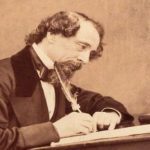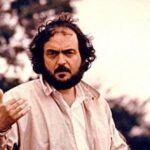 Weird Stuff
Weird Stuff  Weird Stuff
Weird Stuff  Our World
Our World 10 Ways Your Christmas Tree Is More Lit Than You Think
 Movies and TV
Movies and TV The 10 Coolest Stars to Set Sail on The Love Boat
 History
History 10 Things You Didn’t Know About the American National Anthem
 Technology
Technology Top 10 Everyday Tech Buzzwords That Hide a Darker Past
 Humans
Humans 10 Everyday Human Behaviors That Are Actually Survival Instincts
 Animals
Animals 10 Animals That Humiliated and Harmed Historical Leaders
 History
History 10 Most Influential Protests in Modern History
 Creepy
Creepy 10 More Representations of Death from Myth, Legend, and Folktale
 Technology
Technology 10 Scientific Breakthroughs of 2025 That’ll Change Everything
 Weird Stuff
Weird Stuff Ten Bizarre Facts About The Doge Meme
 Our World
Our World 10 Ways Your Christmas Tree Is More Lit Than You Think
 Movies and TV
Movies and TV The 10 Coolest Stars to Set Sail on The Love Boat
Who's Behind Listverse?

Jamie Frater
Head Editor
Jamie founded Listverse due to an insatiable desire to share fascinating, obscure, and bizarre facts. He has been a guest speaker on numerous national radio and television stations and is a five time published author.
More About Us History
History 10 Things You Didn’t Know About the American National Anthem
 Technology
Technology Top 10 Everyday Tech Buzzwords That Hide a Darker Past
 Humans
Humans 10 Everyday Human Behaviors That Are Actually Survival Instincts
 Animals
Animals 10 Animals That Humiliated and Harmed Historical Leaders
 History
History 10 Most Influential Protests in Modern History
 Creepy
Creepy 10 More Representations of Death from Myth, Legend, and Folktale
 Technology
Technology 10 Scientific Breakthroughs of 2025 That’ll Change Everything
10 Directors Who Made One Horror Film & Quit
Horror cinema is a broad (and haunted) church. From the early days of silent spooks through various heydays, low-points, and renaissances, the genre has come far. And along the way, it has picked up a series of solitary entries into the canon from directors who otherwise wanted nothing to do with it. These filmmakers made one horror film and, for various reasons—financial, personal, critical, and temporal—chose to throw in the blood-drenched towel and never darken horror’s doorstep again.
Related: Ten Incredible Film Directors with Distinctive Styles
10 Stanley Kubrick (The Shining, 1980)
Adapting Stephen King’s book of the same name, Stanley Kubrick brought The Shining to the big screen in 1980, using the talents of Jack Nicholson to realize the gradual decline of the film’s isolated protagonist, family man-cum-axe murderer Jack Torrance.
But, before making the film, the director was never interested in horror, even turning down the chance to direct The Exorcist. As we know from his filmography, Kubrick liked to make films that plumbed the male psyche and its desire for control, frequently finding this in war, violence, and sex. The Shining is at once a departure from and affirmation of many of these themes.
While the film was once reported as one of the scariest horror films ever made, contemporary audiences recognize its value in terms of tension and dread rather than straightforward horror. Kubrick managed to dodge typical horror tropes, trading thrills and spills for something nuanced and intellectual. Indeed, his dedication to, in the words of his PA Leon Vitali, making a horror “in the psychological sense rather than a vicious, horrible, blood-filled [one]” echoes through the rest of his work and, combined with his penchant for genre-hopping, gives a good reason why he never returned to horror again.[1]
9 Tomas Alfredson (Let the Right One In, 2008)
Tomas Alfredson has one of the most slapdash filmographies in modern cinema, with a few comedy hits in the Swedish indie scene, a major studio success, a major studio flop, and one lonesome horror film in the middle of it all.
Adapted from John Ajvide Lindqvist’s novel of the same name, Let the Right One In uses a small suburb of Stockholm as the setting for a contemporary vampire romance that leaves Twilight shaking in its boots. A break-out hit, the film caught the attention of Western audiences in spite of its Swedish subtitles and has since come to be recognized as one of the best vampire movies ever made.
Why then, given it was his most successful film at the time of release, didn’t Alfredson make more horror? As it turns out, it was the all-too-human struggle of the young protagonist Oskar in the book that ignited his passion for the project rather than the horror. Though, at the time, Alfredson said he wasn’t against doing another one if the right script came up, it simply never did.[2]
8 James Gunn (Slither, 2006)
These days, James Gunn is known for churning out blockbusting superhero hits like nobody’s business, making an enduring success of Guardians of the Galaxy, rejuvenating the Suicide Squad, and recently taking the reins for the entire DCEU. But, in this, many fans have (perhaps conveniently) forgotten his patchy earlier films, which speak of a director keen to make anything at all rather than one with any kind of vision.
After penning both live-action Scooby Doo movies, Gunn’s directorial debut came in the form of Slither. This B-movie homage failed to make back its mid-size budget at the box office. Gunn has since written a couple more horrors but hasn’t directed a single one—and this is the reason why.
While Slither has gone on to be appreciated by fans and critics in the same vein as the likes of Death Proof and Machete, the box office flop was greatly worsened by prominent critics dragging the film through the mud. Popular critics like Roger Ebert gave the film negative reviews. Borys Kit of the Hollywood Reporter went as far as to say Slither “killed off the horror-comedy genre for the near future.”[3]
7 Jonathan Demme (Silence of the Lambs, 1991)
Although Jonathan Demme is known for some heavyweight cinema, such as Philadelphia and Rachel Getting Married, he has managed to avoid auteur status throughout his career—seemingly by choice. Or choices. And one of those choices is the psychological horror classic Silence of the Lambs
.
Demme took over directing duties when original director Gene Hackman ran out of time during pre-production and threw the towel in. The studio had to find a replacement fast. (https://www.empireonline.com/movies/features/gene-hackman-archive-interview-retirement-acting-novels/) Detouring from a string of action comedies and concert movies, Demme threw himself into the project and, with Jodie Foster and Anthony Hopkins, brought Hannibal Lecter to the screen for the second time, winning five Academy Awards, and setting a new precedent for prestige horror in Hollywood.
While this level of success might have tempted Demme back out of his comfort zone and into the horror world again, it was the sequel that put him off the franchise and genre for good. Following the publication of Thomas Harris’s Lambs sequel, Hannibal, Foster, Demme, and screenwriter Ted Tally all turned their backs on the series, finding the book’s extreme and disturbing content too much to stomach.[4]
6 David Fincher (Alien 3, 1992)
While his films often locate the unsettling and the uncanny in contemporary life, David Fincher’s career has largely been focused on high-tension thrillers like The Game and Gone Girl and capital-A American dramas like The Social Network and Benjamin Button. Suffice to say, he has avoided horror ever since his tumultuous debut, Alien 3.
The film was beset by issues from the beginning, owing to the interference of producers David Giler, Walter Hill, and Gordon Carroll, who recognized the earning potential of another Alien sequel and wanted as much control as possible over the process. Enter Fincher, a young director making his bones in music videos.
If the gambit was to use Fincher’s inexperience to control him, it didn’t pay off. The director had a perfectionist working process and insisted on doing things his way. This made for a tumultuous production between Fincher and the producers, who were constantly leaning on him, and resulted in a film that served the desires of nobody involved. Alien 3 set a precedent of misery and strife. Fincher disowned the movie and has never returned to the horror genre.[5]
5 Stephen King (Maximum Overdrive, 1986)
One of the most recognizable names in horror, Stephen King has brought world-class horror to page and screen for half a century. It makes sense then that he would seek to try his hand at adapting one of his own stories for the silver screen.
Maximum Overdrive sees all of Earth’s machinery turn sentient, initiating a global killing spree with fatalities masterminded by everything from 18-wheeler trucks to vending machines. It is a fun, gory premise that should have translated well to cinema. Yet it was a critical and commercial disaster. King was totally inexperienced, with no background in film or the technical know-how to carry a production. He didn’t know how to position his cameras, direct his actors, or create compelling scenes. He even cost his DP an eye by insisting on dangerous practices on set.
Since then, the writer has sworn off directing altogether, making Maximum Overdrive his only horror… and his only film. That hasn’t, however, stopped him from appearing in adaptations of his work, including a recent bit-part as a shopkeeper in It Chapter Two.[6]
4 Kathryn Bigelow (Near Dark, 1987)
Known for her gritty action-dramas, like The Loveless and Detroit, it is hard to believe that Kathryn Bigelow’s second feature was a neo-Western supernatural horror, charting the story of a young farmer who becomes wrapped up with a rag-tag “family” of undead outlaws.
A forgotten gem of the genre, vampire flick Near Dark lost out in the popularity stakes to its contemporary and competitor, The Lost Boys. While it has since gained cult status and a small following, it was never actually rooted in a desire to compete with other vampire movies. The director’s foray into horror was marked by her decision to go against convention, get rid of many of the traditional elements, and make something new, fused with the Western genre and based largely around the concept of outlaws and rebels—a theme established in her debut, The Loveless.
As Bigelow never had any significant motivations to make horror in the first place and acted instead on an interest in the artistry of trying something new and unseen, she has never had the inclination to return.[7]
3 Steven Soderbergh (Unsane, 2018)
Low-budget horror Unsane marks a departure from director Steven Soderbergh’s body of work as a whole (Ocean’s Eleven, Magic Mike), and not just because it’s a horror. Shot on an iPhone 7, Unsane takes an unconventionally up-close-and-personal approach to filmmaking, using the intimacy of the smaller device to tell the story of a woman detained in a psychiatric facility with her supposed stalker. The audience is left to thresh out whether she’s actually lost touch with reality or the whole thing is a conspiracy to rinse the patients for insurance money.
Soderbergh was so dedicated to doing something genuinely different that he even attempted to have his name removed from the film. Alas, the Directors Guild didn’t go for it, but it was all to allow audiences to experience and respond to the work authentically and not through the lens of a well-known director’s oeuvre. Never one to conform to expectations, the door is still open for Soderbergh to return to horror in the future. Still, he hasn’t crossed that threshold again yet.[8]
2 Gus Van Sant (Psycho, 1998)
As another experimental auteur, Gus Van Sant has made a career out of zigging when everyone expects him to zag, whether with Columbine rehash Elephant, the nigh-plotless wilderness-set Gerry, or indeed his remake of Alfred Hitchcock’s horror classic Psycho.
With Vince Vaughn starring as Norman Bates, Van Sant pursued his shot-for-shot remake with dual purposes—one was to bring Psycho into color because the popularity of black and white movies had waned; the other was simply because it had never been done. Thus, that the film is one of the most popular horrors of all time was almost purely coincidental and inconsequential—Van Sant merely wanted to experiment with, preserve, and rejuvenate an iconic piece of cinema that he has an unwavering passion for.
The director hasn’t made a horror since and, in fact, hasn’t produced or directed any films since 2018. The fact that pretty much all the typical horror tropes run contrary to Van Sant’s habitually naturalistic filmmaking style suggests he won’t make another.[9]
1 Robert Altman (Images, 1972)
Robert Altman’s films are often crowded and unfocused, typically emphasizing realism over narrative, even when portraying fantastical characters or premises. Not so in the case of the only horror film of his career, Images. With a spartan cast and remote setting, Images has an obsessive focus on its subject, Cathryn, a children’s author whose hallucinations take on a life of their own while secluded in a country house working on her current opus.
After seeing Ingmar Bergman’s Persona in the mid-1960s, Altman felt inspired to pen his response to it, which came to him, unsurprisingly perhaps, in images. The result is something deeply unsettling, designed by the director and his team to neither conform to typical storytelling lines nor expectations of time, place, and person, with characters often doubling or switching out for others and the location remaining obstinately elusive.
Altman died in 2006, having never again returned to the genre. Whatever it was he saw in Bergman, he purged from his system with Images—and we, as an audience, are all the better for its existence, marking as it does a curious oddity in the otherwise fairly consistent filmography of a significant auteur.[10]








